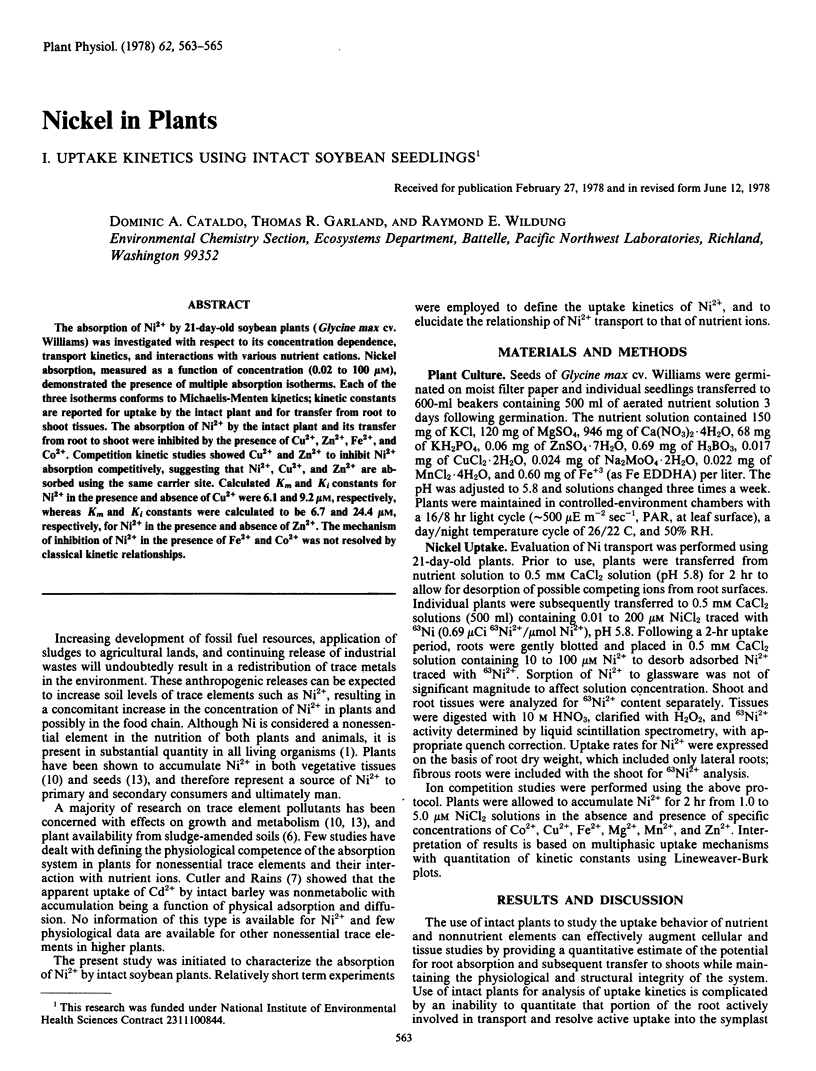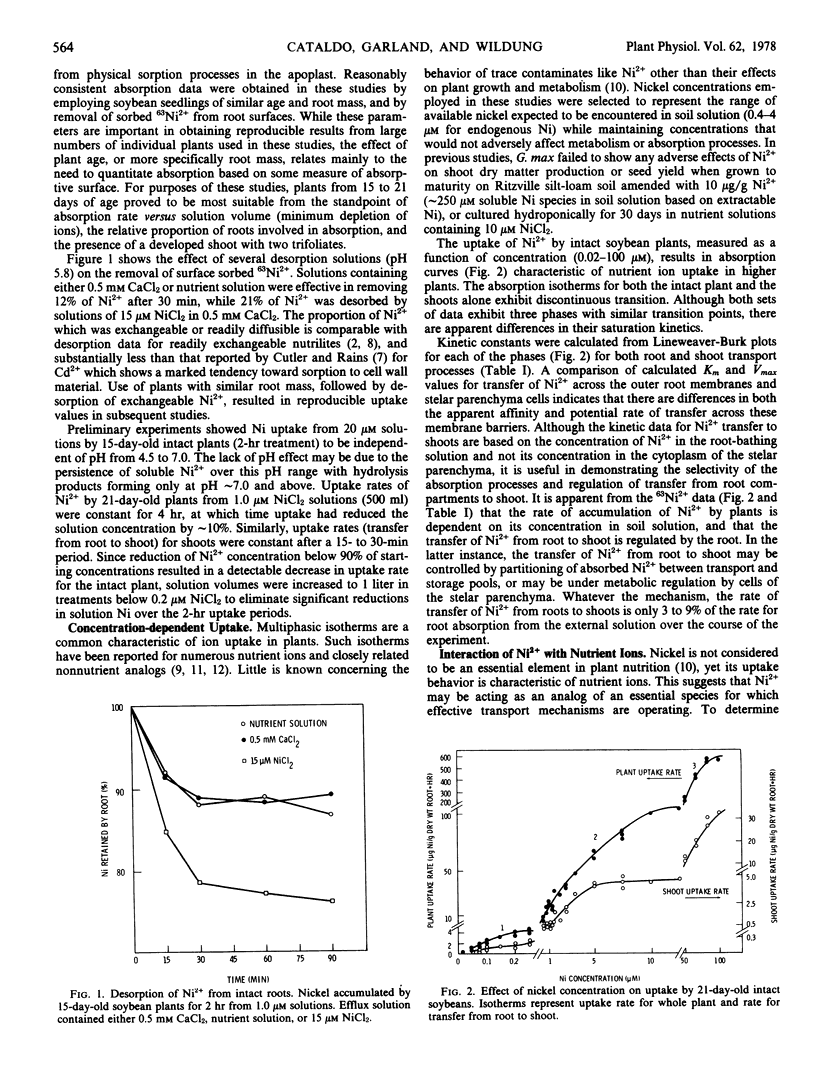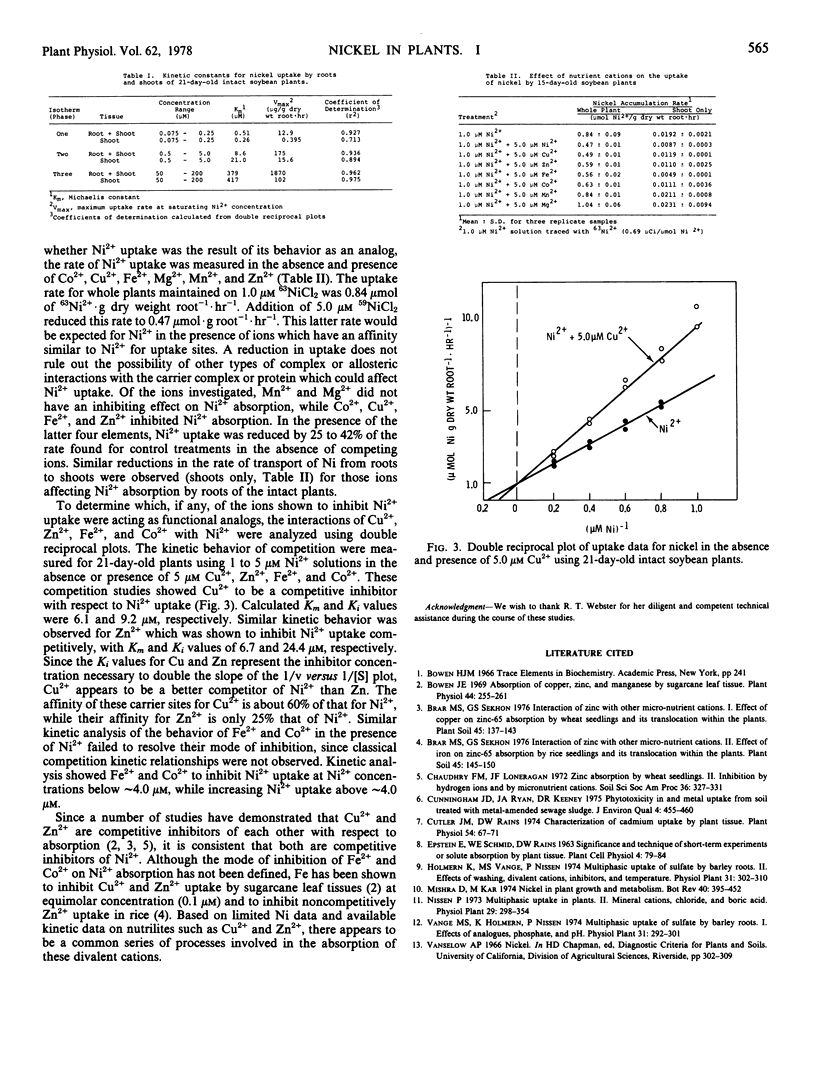Abstract
The absorption of Ni2+ by 21-day-old soybean plants (Glycine max cv. Williams) was investigated with respect to its concentration dependence, transport kinetics, and interactions with various nutrient cations. Nickel absorption, measured as a function of concentration (0.02 to 100 μm), demonstrated the presence of multiple absorption isotherms. Each of the three isotherms conforms to Michaelis-Menten kinetics; kinetic constants are reported for uptake by the intact plant and for transfer from root to shoot tissues. The absorption of Ni2+ by the intact plant and its transfer from root to shoot were inhibited by the presence of Cu2+, Zn2+, Fe2+, and Co2+. Competition kinetic studies showed Cu2+ and Zn2+ to inhibit Ni2+ absorption competitively, suggesting that Ni2+, Cu2+, and Zn2+ are absorbed using the same carrier site. Calculated Km and Ki constants for Ni2+ in the presence and absence of Cu2+ were 6.1 and 9.2 μm, respectively, whereas Km and Ki constants were calculated to be 6.7 and 24.4 μm, respectively, for Ni2+ in the presence and absence of Zn2+. The mechanism of inhibition of Ni2+ in the presence of Fe2+ and Co2+ was not resolved by classical kinetic relationships.
Full text
PDF


Selected References
These references are in PubMed. This may not be the complete list of references from this article.
- Bowen J. E. Absorption of copper, zinc, and manganese by sugarcane leaf tissue. Plant Physiol. 1969 Feb;44(2):255–261. doi: 10.1104/pp.44.2.255. [DOI] [PMC free article] [PubMed] [Google Scholar]
- Cutler J. M., Rains D. W. Characterization of cadmium uptake by plant tissue. Plant Physiol. 1974 Jul;54(1):67–71. doi: 10.1104/pp.54.1.67. [DOI] [PMC free article] [PubMed] [Google Scholar]


